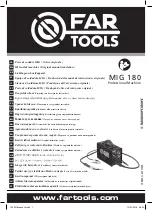
d
e
f
g
h
©
Street
Crane
Co
Ltd
Page
40
of
103
Ref:
D3256
rev.
B
4
OPERATING
INSTRUCTIONS
4.1
INTENDED
USE
The
crane
/
hoist
is
designed
for
lifting,
moving
and
lowering
loads,
up
to
the
rated
capacity
of
the
equipment,
by
means
of
a
hook
or
other
similar
load
handling
device.
The
equipment
should
not
be
modified
or
any
additions
made
without
the
approval
of
Street
Crane
Co
Ltd.
The
equipment
is
not
intended
for
transporting
any
persons
either
suspended
in
a
basket
from
the
hoist
or
for
persons
travelling
on
the
crane
bridge.
The
crane
/
hoist
is
not
intended
for
pulling
loads
at
an
angle
and
not
for
towing
or
dragging
loads
along
the
floor.
The
hoist
is
designed
for
lifting
a
load
in
a
vertical
path
only.
Ensure
that
the
hoist
is
always
operated
within
its
rated
capacity
(SWL).
The
weight
of
any
lifting
gear
should
be
taken
into
account
when
assessing
the
load
on
the
hoist.
It
may
also
be
necessary
to
allow
for
any
adhesion
between
the
load
and
its
supports.
1
Overloading
can
lead
to
a
possible
failure
of
some
of
the
load
carrying
parts.
Overloading
the
crane
/
hoist
may
start
a
defect,
which
could
lead
to
future
failure
even
at
less
than
the
rated
capacity.
Do
not
use
the
crane
/
hoist
for
pulling
loads
loose,
i.e.
pulling
components
from
moulds
and
always
make
necessary
allowances
for
any
adhesion
between
the
load
and
its
supports.
The
end
of
travel
limits,
(hoist
or
travel),
are
not
intended
to
be
a
regular
method
of
stopping
the
motion.
They
are
safety
devices
and
they
should
be
approached
with
caution.
The
hoist
is
not
intended
to
operate
with
a
slack
rope.
4.2
DUTIES
OF
THE
OPERATOR
/
SAFE
HOISTING
PRACTICES
At
the
start
of
each
working
day
or
shift,
carry
out
the
daily
pre
‐
use
checks
see
section
5.4.
Do
not
work
with
any
crane
or
hoist
if
any
defects
are
found
which
may
compromise
safety.
The
following
information
serves
as
a
guide
for
safe
hoisting
practices
and
an
operator
adhering
to
these
will
quickly
find
that
he
/
she
is
able
to
work
both
smoothly
and
quickly,
without
prejudicing
safety
and
equipment.
1.
Know
where
the
safety,
fire
and
first
aid
equipment
is
located
and
how
to
use
it.
2.
Ensure
that
no
one
is
working
on
the
crane
track,
crane
platform
(if
fitted)
or
where
they
could
be
struck
by
the
crane
/
hoist.
3.
Before
using
the
crane
/
hoist
make
a
full
visual
inspection
to
ascertain
that
the
equipment
is
in
good
working
order,
paying
particular
attention
to
the
rope
and
hook.
See
5.4
Daily
pre
‐
use
inspections.
4.
Do
not
use
the
crane
for
anything
other
than
its
intended
purpose.
5.
Ensure
the
crane
is
properly
maintained
and
that
all
the
necessary
examination
and
maintenance
records
are
up
to
date.
6.
All
relevant
accident
prevention,
safe
lifting
and
slinging
procedures
should
be
obeyed.
7.
Constantly
monitor
all
crane
and
hoist
movements
and
be
ready
to
activate
the
emergency
stop
should
any
abnormal
circumstances
arise.
Be
especially
aware
of
instances
where
the
crane
/
hoist
may
fail
to
stop
when
the
push
button/joystick
is
released
or
if
the
crane
/
hoist
moves
unexpectedly.
8.
Always
operate
the
crane
with
care
and
consideration.
Care
should
be
taken
to
avoid
the
swinging
of
loads.
9.
Ensure
that
the
SWL
data
plates
are
clearly
visible
to
the
operator
at
all
times.
10.
Centre
the
hoist
over
the
load
before
lifting.
Do
not
side
pull
as
this
can
damage
the
hoist
and
endanger
the
operator.
11.
Do
not
lower
the
hook
/
bottom
block
so
far
as
to
allow
the
hoist
ropes
to
become
slack.
1
If
this
does
happen,
the
operator
should
satisfy
himself
that
the
rope
is
correctly
reeved
on
the
system
of
sheaves
&
hoist
barrel
before
continuing
to
operate
the
crane.
12.
Do
not
lift
a
load
unless
you
can
see
it
is
securely
slung
with
“suitable”
lifting
tackle.
Summary of Contents for ZX6
Page 2: ......
Page 4: ...defgh Street Crane Co Ltd IV THIS PAGE IS INTENTIONALLY BLANK ...
Page 99: ...defgh Street Crane Co Ltd Ref D3256 rev B Page 99 of 103 NOTES ...
Page 100: ...defgh Street Crane Co Ltd Page 100 of 103 Ref D3256 rev B NOTES ...
Page 101: ......
Page 102: ......
















































